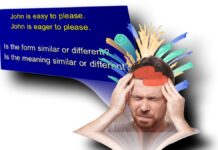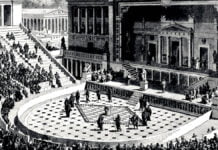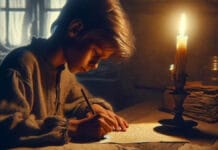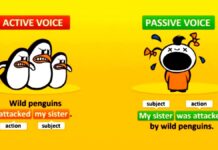The short story is a fascinating and versatile literary form, offering a compact yet impactful reading experience. It is a form of literature that typically can be read in one sitting and focuses on a self-contained narrative or a series of linked events. It has a shorter length than a novel, allowing it to be consumed in brief periods. The short story typically focuses on a single event, character, or theme. Despite its brevity, a short story can convey complex emotions, ideas, and narratives.
Short stories have existed for centuries, with early versions present in oral storytelling traditions. The modern short story form emerged in the 19th century and matured through the works of writers like Anton Chekhov, Guy de Maupassant, Nathaniel Hawthorne, and Edgar Allan Poe. The genre continues to thrive, with many authors using it to explore diverse themes, experiment with narrative techniques, and engage readers in thought-provoking and emotionally impactful storytelling experiences.
Definition and Key Features
The short story is usually concerned with a single effect conveyed in only one or a few significant episodes or scenes. The form encourages economy of setting, concise narrative, and the omission of a complex plot; character is disclosed in action and dramatic encounter but is seldom fully developed.
- Shorter than Novels: Typically ranging from a few hundred to a few thousand words, it can be read in one sitting.
- Single Plot and Limited Characters: Focuses on a single event, incident, or conflict, exploring it deeply with a restricted cast of characters.
- High Concentration and Impact: Every word plays a crucial role, creating a concise and impactful narrative.
- Variety of Styles and Themes: Encompasses diverse genres like realism, fantasy, science fiction, and can explore any theme imaginable.
- Emphasis on Atmosphere and Character Development: Often creates a powerful mood or atmosphere while revealing characters through their actions and reactions within the limited space.
Essential Elements
- Plot: Whether realistic or fantastical, the plot drives the narrative, engaging the reader in the sequence of events.
- Characters: Even with limited space, well-developed characters are crucial, often facing choices and challenges that reveal their personalities and motivations.
- Setting: Whether vividly described or subtly woven into the story, the setting contributes to the atmosphere and enhances the plot and character development.
- Theme: While not always explicitly stated, the story conveys a central theme or message, prompting reflection and interpretation.
- Point of View: The perspective from which the story is narrated (first person, third person, etc.) shapes the reader’s perception and understanding.
Point of View
Point of view refers to the perspective from which a story is told, and it plays a crucial role in shaping the reader’s understanding of the narrative. In short stories, authors often employ various points of view to achieve different effects and engage the reader in different ways.
First-person
In the first-person point of view, the narrator is a character within the story who refers to themselves as “I”. This perspective allows readers to experience the story’s events through the narrator’s eyes and provides insight into their thoughts, feelings, and experiences. First-person narration can create a sense of immediacy and intimacy, as readers feel closely connected to the narrator’s perspective.
Third-person
In the third-person limited point of view, the narrator is an external observer who tells the story from one character’s perspective. The narrator uses pronouns like “he” or “she” to refer to the characters and only has access to the thoughts and feelings of the focal character. This perspective allows for psychological depth while maintaining some distance from the character’s inner world.
In the third-person omniscient point of view, the narrator is an all-knowing observer who has access to multiple characters’ thoughts, feelings, and motivations. This perspective provides a broader view of the story world and allows the narrator to delve into the minds of various characters. Third-person omniscient narration can offer insights into multiple perspectives and provide context for the actions and motivations of the characters.
Second-person
The second-person point of view is less common in short stories but can create a sense of immediacy and direct engagement with the reader. In second-person narration, the narrator addresses the reader directly using pronouns like “you.” This perspective can make readers feel like active participants in the story as if they are experiencing the events firsthand.
Unreliable Narrator
In some short stories, the narrator may be unreliable, meaning their perspective is skewed or unreliable. This can add complexity and depth to the narrative as readers must interpret the story’s events through the lens of the narrator’s biases, misunderstandings, or delusions. Unreliable narration can challenge readers’ assumptions and encourage them to question the reliability of the narrator’s perspective.
Brevity
Brevity is the defining feature of a short story; the length is short enough for the story to be completed in a single sitting. Unlike novels, which can span hundreds of pages, short stories are relatively brief in length, usually ranging from a few hundred to a few thousand words. This brevity forces the economy of writing, where each word serves a vital role in the narrative, which allows for a quick and concentrated exploration of a particular idea or situation.
Characterisation
While short stories may feature a small cast of characters, they are typically well-developed and memorable. Authors often use subtle details and dialogue to convey the personality traits, motivations, and relationships of their characters. The limited number allows the reader to get a deeper understanding of each character within the span of the short narrative.
Setting
Despite their brevity, short stories often feature vivid and evocative settings that contribute to the mood and atmosphere of the narrative. Whether it’s a bustling city street, a remote village, or a fantastical realm, the setting helps to ground the story in a specific time and place. But, the setting in a short story is usually limited to one or two locations because there isn’t much space to develop multiple backdrops.
Theme
Like all works of literature, short stories often explore universal themes and ideas. Whether it’s love, loss, identity, or the human condition, the theme of a short story provides a deeper layer of meaning and resonance for readers. The restricted format forces the writer to approach these ideas concisely and directly.
Focused Plot
Unlike novels, which may explore subplots and various storylines, a short story typically emphasizes a single, focused plot, often driving towards a sudden or impactful ending. They tend to have a clear beginning, middle, and end, with a tightly constructed plot that unfolds within a limited timeframe and often aims to produce a single emotional effect. Edgar Allan Poe emphasized this principle, arguing that everything in the story should contribute to generating this effect.
Narrative Technique
Short stories may employ a variety of narrative techniques to engage and captivate readers. This can include unreliable narrators, nonlinear storytelling, or experimental forms of prose. The narrative technique chosen by the author often reflects the themes and style of the story.
Style and Tone
The author’s style includes the choice of words, tone, and syntax, which can significantly influence the reader’s interpretation and emotional reaction to the story.
Structure
Most short stories follow a traditional narrative arc – exposition, rising action, climax, falling action, and resolution – although not always in a linear fashion. Some modern short stories play with structure for stylistic or thematic purposes.
Resolution
Short stories typically conclude with a resolution that provides closure for the reader. This resolution may involve a twist ending, a moment of epiphany, or a sense of ambiguity that leaves the reader pondering the more profound implications of the story.
Famous Short Stories
- The Gift of the Magi by O Henry
- The Necklace by Guy de Maupassant
- The Tell-Tale Heart by Edgar Allan Poe
- The Lottery Ticket by Anton Chekhov
- The Lottery by Shirley Jackson
- A Good Man is Hard to Find by Flannery O’Connor
These stories showcase the diverse range of themes, styles, and techniques that can be found within the short story genre. Short stories offer a compact yet powerful form of storytelling that can leave a lasting impact on readers.





























